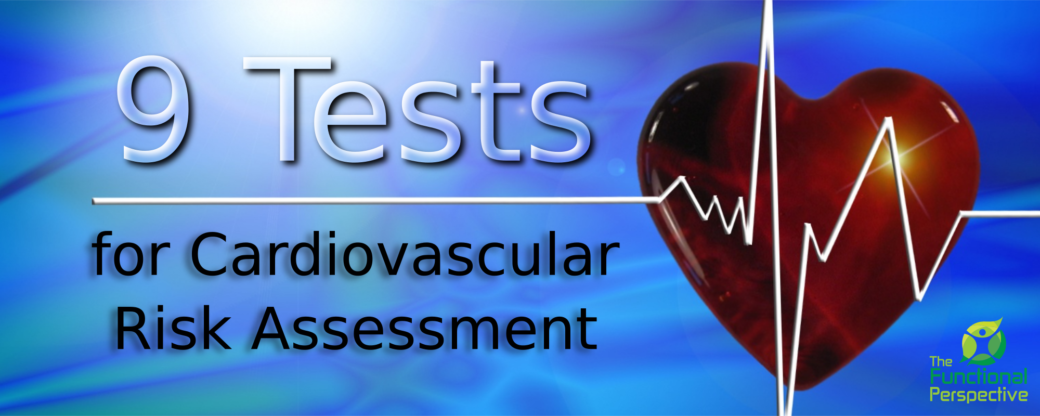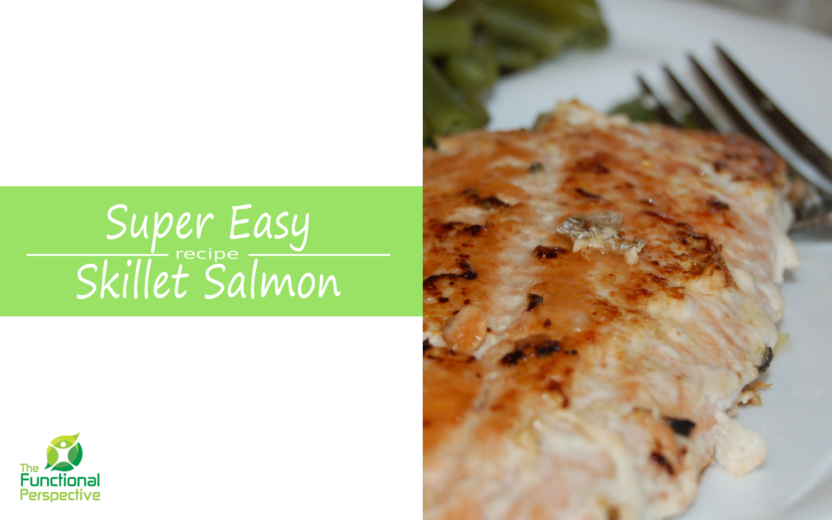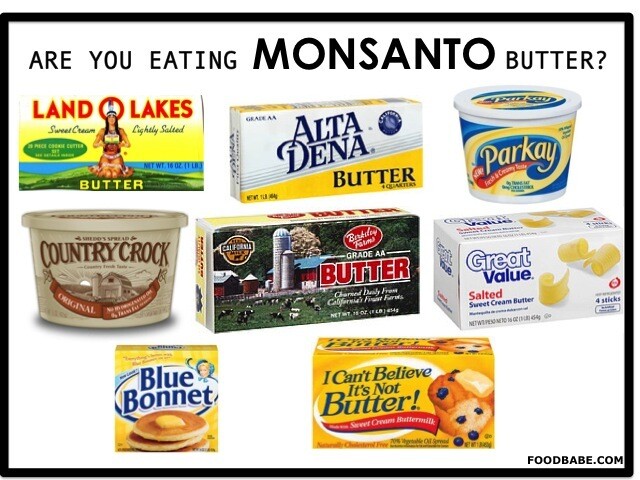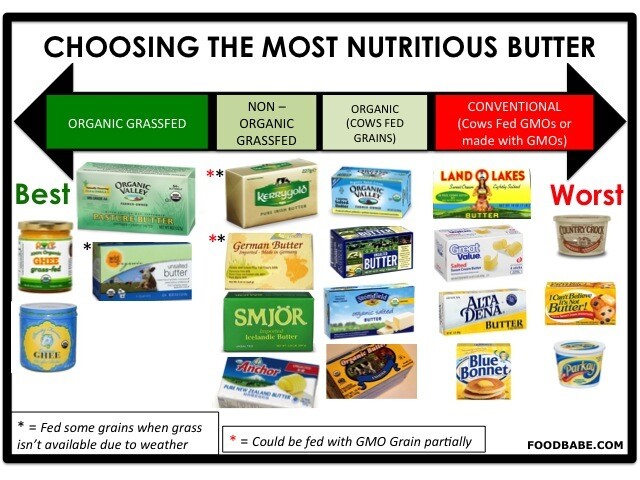9 Tests for Cardiovascular Risk Assessment

If you are reading this chances are you are looking for something more than the standard tests for diagnosing heart disease. My guess would be you have a desire to get to the underlying causes and factors of your state of health. I would further venture to say you are also looking at ways to prevent adverse health. I am going to quickly touch on Cardiovascular Assessment in this post.
Heart disease is at the top of the list of health issues in the United States and a growing concern for younger adults. There are several tests available that will dig deeper into the function inside your body and provide us with warnings adverse health is on its way. These tests are indicators of potential malfunction and impending consequences of the disruption of proper balance. To get a better look at what is going on ask your healthcare provider for the following tests:
-
Total Cholesterol

-
LDL Cholesterol
-
HDL Cholesterol
-
Triglycerides
-
LDL Density Patterns
-
C-Reactive Protein
-
Homocysteine
-
Lp (a)
-
Fibrinogen
Some of these you are probably already familiar with such as the Cholesterol and Triglycerides. You may be wondering – Why the other tests? What makes them significant?
C-reactive protein is a protein which indicates inflammation in the body. This test is a strong risk predictor of future heart attack and/or stroke. It is important to note past or current infections can increase the levels of this protein.
Homocysteine is an amino acid which can injure the lining of blood vessels, thus triggering deposits and atherosclerosis. One study found that men with high homocysteine had 3 times greater risk of heart attack!
Lipoproteins are lipids and proteins that are transported through your bloodstream in ‘packages’. One of these is Lipoprotein(a) [Lp(a)] Lipoprotein(a) is a marker for predicting the severity of future heart disease. This is often strongly influenced by heredity.
Fibrinogen is an important agent in the process of the formation of blood clots. Again, elevated levels are linked to heart disease and/or stroke.
Each of these areas are affected by our diets and lifestyles. Making changes in our habits can greatly affect the damage from elevated ‘warning lights’. Be sure to ask your provider for ways to return a healthy homeostasis in your body!
A few quick tips are:
- Eat Real foods, avoid packaged and processed foods
- Get plenty of water daily!
- Get plenty of rest and relaxation daily!
- Exercise – the best exercise is the one you will do 🙂 Start low and go slow
As always, comments, questions welcomed and I hope this has been beneficial to you or a loved one!
[Relevant Research:
Cantin B, Despres JP, Lamarche B, Moorjani S, Lupien PJ, Bogaty P, Bergeron J, Dagenais GR. Association of fibrinogen and lipoprotein(a) as a coronary heart disease risk factor in men (The Quebec Cardiovascular Study). Am J Cardiol. 2002 Mar 15;89(6):662-6.
Lamarche B, St-Pierre AC, Ruel IL, Cantin B, Dagenais GR, Despres JP. A prospective, population-based study of low density lipoprotein particle size as a risk factor for ischemic heart disease in men. Can J Cardiol. 2001 Aug;17(8):859-65.
Blake GJ, Ridker PM. Novel clinical markers of vascular wall inflammation. Circ Res. 2001 Oct 26;89(9):763-71.
Clarke R, Lewington S, Donald A, Johnston C, Refsum H, Stratton I, Jacques P, Breteler MM, Holman R. Underestimation of the importance of homocysteine as a risk factor for cardiovascular disease in epidemiological studies. J Cardiovasc Risk. 2001 Dec;8(6):363-9.
Matsumoto Y, Daida H, Watanabe Y, Sunayama S, Mokuno H, Yokoi H, Yamaguchi H. High level of lipoprotein(a) is a strong predictor for progression of coronary artery disease. J Atheroscler Thromb. 1998;5(2):47-53.
von Eckardstein A, Schulte H, Cullen P, Assmann G. Lipoprotein(a) further increases the risk of coronary events in men with high global cardiovascular risk. J Am Coll Cardiol. 2001 Feb;37(2):434-9.
Austin MA. Plasma triglyceride as a risk factor for cardiovascular disease. Can J Cardiol. 1998 May;14 Suppl B:14B-17B.
Easy Peasy Skillet Salmon w/ Lemon & Butter Sauce

Today was a very busy day! Which is one of the reasons I love this dish so much. It is super easy, no prep needed and provides us a way to get in those much needed omega-3s!

[/recipe-notes] [recipe-ingredients] – 4 Salmon portions – fresh or thawed if previously frozen
– 2 TB +1 tsp Cold Grass-fed butter
– 1/2 Lemon
– Salt & Pepper – to taste
– Dill(Optional garnish) [/recipe-ingredients] [recipe-directions] 1. Pre-heat skillet on medium heat
2. Once skillet is hot spread 1 TB of butter around bottom of skillet to lightly coat skillet, it may take less than the 1 TB depending on size of pan.
3. Place Salmon in skillet with skin side down (or if no skin the darker side where the skin was)
4. Cook for about 5 minutes then add in about 1 tsp of butter before flipping. If using salt sprinkle salt on top of salmon just prior to flipping this first time. As you flip spread some of the newly melted butter so it will be under the flipped salmon.
5. IF your salmon has skin, you can remove the skin at this point with a fork or two, peeling it off with edge of fork.
6. Squeeze a bit of Lemon over the salmon while it is cooking. Let it cook for 3-5 minutes and check for any pink in the middle. If there is pink you can continue to cook or flip one more time.
7. Once the salmon flakes and finished cooking remove from skillet and place on plates.
8. In same skillet melt the remaining butter, once butter is melted squeeze most of the 1/2 lemon. As you squeeze allow the juice to drizzle around the pan. It should sizzle. Let it sizzle for about 30 seconds then drizzle the lemon butter on the salmon.
9. Garnish with pepper and/or dill as desired.
10. TIPS: I only use stainless or cast iron pans. To keep foods from sticking I will heat up my pans before adding any oil. When I do add oil I make sure the oil is cold. Cold butter or cold coconut oil seems to work best at keeping things from sticking.
[/recipe-directions] [/recipe]
Is Butter Secretly Ruining Your Health?
Is Butter Secretly Ruining Your Health? Have you ever wondered the difference between organic, grass-fed and regular butter? I came across this well written and well sourced article that takes a look at what is really going on and how to choose the healthiest butter for you and your family.
Source: Is Butter Secretly Ruining Your Health?



